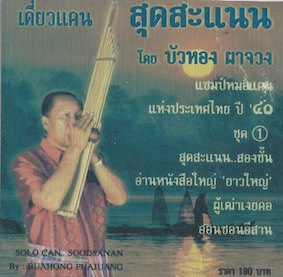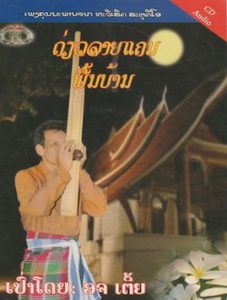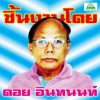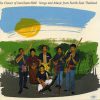 以下、買い付けてくれた神奈川のHさん(感謝!)のメモから…旅の雰囲気が伝わりますね。
以下、買い付けてくれた神奈川のHさん(感謝!)のメモから…旅の雰囲気が伝わりますね。
ラオス中南部、サワンナケートの街からトゥクトゥクで30分程の所にある仏教寺院 タート・インハン。敷地の中央にはシブイ感じの仏塔が立っており、お祭りの日に訪れると、お花と線香を手にした多くの参拝者がその周りを楽しそうに巡っていました。
近くに設営されたテント小屋では衣類や日用品が所狭しと並べられ、その一角におもちゃのケーンと共に置いてあったのがこのCD (ネット>☆によるとタイの有名な奏者のようです)。
ケーンの本場サーラワンはここから南へ200km程ですが、次第に気分が盛り上がってきたのでした。

が、コレ聴いたことがある!なぜじゃ?と思ったら、左CDと同じじゃないですか!?ということは、ラオスでも発売されているタイ、イサーンのケーン名人、ということに?
名前のローマ字表記がラオスだと “KHAUHOG PHACHAG” タイだと”BUAHONG PHAJUANG” となるのは、同じラオ語でもラオスとイサーンでは文字表記が異なるため、ローマナイズも異なって来るということでしょうか? 文字表記の違いが、ラオスとイサーン(タイ語表記に準拠しているそう)の人々の発音や文法の違いを微妙に生み出し、同じラオ語を話ながら、しだいに両者の会話が通じづらくなっている、という話も聞いたことがありますが…。
それはともかく、2枚のジャケのを見較べると、確かに撮られた写真の時期が随分違っていて、若い頃と現在の姿の違いはあっても、同一人物と納得されるのでした。なので、>こちらの解説はイイ加減なものとはなりますが、それはそれ、放置します。
Khaen is a musical instrument with a long history as a symbol of Thai Northeast Music. It is closely related with Thai traditional culture, Commonly played in festival, folk custom and celebration, it can express feeling of sadness and happiness when played. Master Buahong Phajuang is one of most famous well-known Khaen master in Thailand’s for Khaen Solo deseendant and inheritor of his Great Grand Father, Kong Phajoeng. His Kaen solo songs are recognized as masterpiece arts for many years up to present. The aim of this study is to analyse different contexts of Master Buahong Phajuang’s Khaen Solo Style in terms of musical form, musical identity and special technique used in his popular 13 songs including Lai Sudsanan, Lai Yai, Lai Noi, Lai Tidsoodyai, Lai Tidsudnoi, Lai Posai, Lai Lompadpraw, Lai Phuthao Ngoei Kore, Lai Sawyigmae, Lai Onsonisan, Lai Phutai, Lai Toei Hua Non Tan and Lai Konsawan. Qualitative research was performed through interview, literature reviews and 2-month one-on-one training with Master Buahong himself. It was found that Khaen Solo can be played in several Occasions such as Self entertrainment, Group entertrainment, Flirting purpose, Parade, Mohlam singing and traditional ceremony for remedy belief. There are mainly two musical forms (meter and non-meter). Unique identity is found in all 13 songs in part of introduction, main body and cadence with embellishment and melody. Player must have distinguished skills in breathing, use of fingers and improvising. These three components must be perfectly coordinated.
〜http://cuir.car.chula.ac.th/handle/123456789/30088より

 トーンサイ・タップノン / マン・ピヤオ・キンチャイ #17
トーンサイ・タップノン / マン・ピヤオ・キンチャイ #17 V.A. / THE ESSENTIAL DOI INTHANON, Classic Isan Pops from the 70s-80s
V.A. / THE ESSENTIAL DOI INTHANON, Classic Isan Pops from the 70s-80s THONHUAD FAITED / DIEW SOE ISAN, The North East Thai Violin of Thonghuad Faited
THONHUAD FAITED / DIEW SOE ISAN, The North East Thai Violin of Thonghuad Faited THE FLOWER OF ISAN, Isan Slete / SONGS AND MUSIC FROM NORTH-EAST THAILAND
THE FLOWER OF ISAN, Isan Slete / SONGS AND MUSIC FROM NORTH-EAST THAILAND